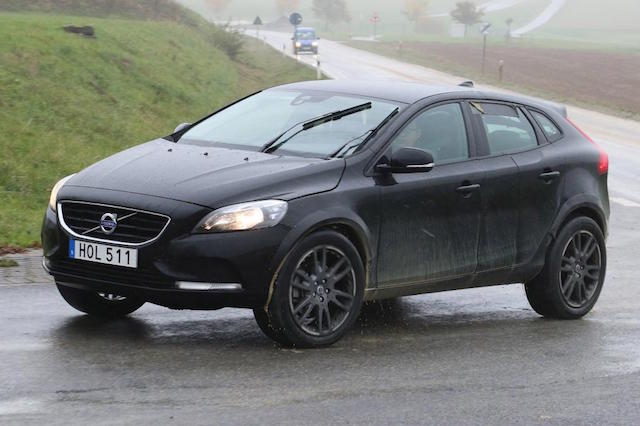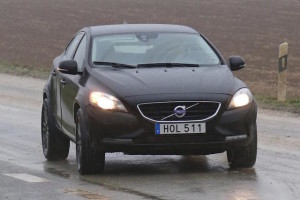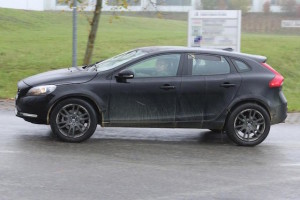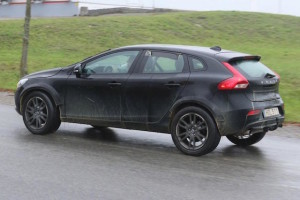
 Motoring industry heavyweights like Fiat Chrysler Automobiles (FCA) CEO Sergio Marchionne believe the global sales shift to crossover/SUVs is permanent.
Motoring industry heavyweights like Fiat Chrysler Automobiles (FCA) CEO Sergio Marchionne believe the global sales shift to crossover/SUVs is permanent.
“People favour SUVs and that’s a permanent solution, especially as mileage improves on utilisation of those vehicles,” Marchionne has said.
In response to the trend, FCA has refocused its growth plan towards its Jeep brand. Hence the Jeep Renegade, more Fiat than Jeep but a small SUV with four-wheel-drive. It’s now on sale in New Zealand.
Compact SUVs are everywhere. Coming here soon will be Audi’s small Q2. Later Volvo’s XC40, the development mule pictured on this page in the body of the Cross Country V40.
The giveaway that there is an SUV platform underneath is the increased ride height and wider track. The platform will be shared between Volvo and its Chinese owners, Geely.
 A camouflaged production body will later provide more clues, but the XC40 is likely to be a scaled down, more athletic form of the XC90, the New Zealand AA Car of the Year for 2015.
A camouflaged production body will later provide more clues, but the XC40 is likely to be a scaled down, more athletic form of the XC90, the New Zealand AA Car of the Year for 2015.
It is expected to go into production in 2018, powered by a range of Volvo’s ‘Drive-E’ four-cylinder engines. There is also talk of a turbocharged three-cylinder unit and a plug-in hybrid. Buyers will get the choice between front or four-wheel drive.
Small SUVs will be the segment’s main growth driver in Europe in coming years, says automotive research firm JATO. They took over as the best-selling segment in Europe last year, with sales rising 24 per cent to 3.2 million vehicles.
Forecasters say SUVs are expected to make up around 25 per cent of new registrations in Europe this year, rising to 33 per cent by 2020. Last year SUVs accounted for 22.5 per cent of Europe’s numbers.
 One out of every three registrations in New Zealand last year was an SUV. Like Europe, buyers here favour front-drive models.
One out of every three registrations in New Zealand last year was an SUV. Like Europe, buyers here favour front-drive models.
JATO analyst Felipe Munoz said around 87 per cent of the B segment SUVs sold in Europe in 2015 were front-wheel-drives – “just taller, subcompact cars, more fuel-efficient than larger SUVs.”
But pushing for SUVs needs parallel investments in new technologies to meet fuel economy levels set out by regulators and the cost to do that will be significant, analysts told news agency Reuters.
Carmakers can develop hybrid versions, reduce weight – a move that began with aluminium bodies, make smaller engines and develop all-electric cars that qualify for special treatment.
Tougher emissions regulations have already led to carmakers moving down the SUV segment in terms of size and engines. Carmakers’ ability to meet emissions limits will also depend on how quickly they develop alternative fuels.
 The push into other fuels is already paying off for companies such as Toyota, which has been advocating for the use of hybrids for years.
The push into other fuels is already paying off for companies such as Toyota, which has been advocating for the use of hybrids for years.
“The issue is getting easier for us and we can’t keep up,” said Karl Schlicht, Toyota Europe’s regional sales head, adding there was a six-month backlog for its RAV4 hybrid crossover in Europe.
While meeting new European regulations after 2021 will also be challenging for Toyota, having hybrid, plug-in hybrid, fuel cells and electric applications within its portfolio will make it easier than for some rivals, Schlicht added.
“We have those four technologies and we can mix and match, so we are comfortable,” he said. “It will be a challenge for us, but it’s doable.”
Toyota will unveil its small CH-R (coupe high-rider) crossover in New Zealand early next year. It’s a bit longer, wider and higher-riding than the Corolla hatchback.
It’s the vehicle at the centre of Toyota’s decision last year to axe its Scion brand in the United States. Toyota developed the Scion name to tap into the youth market in the US.
But research showed America’s young didn’t want cars – they wanted SUVs. Scion had one coming in the form of the concept C-HR, but it remained just that.
So Toyota figured that putting it into production with a Toyota badge would lure the buyers it wanted.
